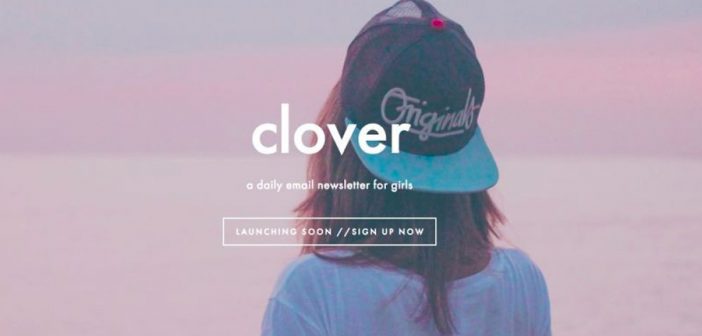When we decided we wanted to start a new publication for teenage girls, and we knew we didn’t want to go the most obvious route — a traditional website, complete with traffic-induced clickbait pressures — email seemed like a no-brainer. Newsletters have experienced something of a resurgence the last few years, and for good reason. Receiving an email you actuallywant feels a lot like getting mail used to feel. Snail mail used to be awesome, before postage stamps got pricey and delivery started to take forever. Email still is, which is why it was the platform of choice for Clover.
It took three minutes to sign up for Mailchimp, and five minutes to create a template we loved. Given that we were writers — not developers or designers — we couldn’t believe how easy it all was. We called it Clover Letter, a nod to the fact that our publication was going to be exclusively an email newsletter. It felt both modern and sort of retro at the same time.
We’re two former teen magazine fanatics, and we believe email is in some ways a throwback to teen glossies like Elle Girl, YM, and even Sassy. They have a special kind of intimacy — almost like a medium for trading secrets, or asking advice — and this direct line to the reader automatically makes it feel more special than the numbers-driven internet model today. Brand loyalty was still a thing, as quaint as it feels now. We even went so far as to claim that email newsletters could be the teen magazines of 2016. The great majority of teen mags may have died out, but as we told WGSN, “fortunately, newsletters have the potential to fill this void by bringing the best parts about old-school teen magazines into the digital age.” We still believe it.
A week into launch, we had a couple thousand subscribers and a 70% open rate. It was a relief to have a metric to obsess over that wasn’t pageviews. It was also a relief to have such an impressive metric so early on. (According to Mailchimp, the average industry open rate is 17%.) As we got more and more comfortable with the backend of Mailchimp, the real fun began — we added GIFs and Instagrams and other things that made the experience feel that much more exciting than your average e-blast. And that’s when our open rate began to plummet.
It wasn’t because readers weren’t opening their emails. They were! It was because email opens are counted, at least for Mailchimp, when a tiny little invisible jpeg at the very, very bottom of the email is downloaded. However, when your email’s too long or too packed with pictures or too bogged down with shiny things, Gmail and lots of other email providers start freaking out. They do something called clipping email. Maybe they think it’s spam, or maybe they just don’t believe we should be sending emails larger than 102kb. When your email is clipped, your open rate suffers. There are other factors that are totally out of your hands that can hurt your open rate, too. Say you’re underground waiting for the subway in the morning. You scroll through your email, and you open one up. You read it from start to finish. But because you don’t have Wi-Fi down there, and because you didn’t load the email before you lost service, the internet is going to assume you never read that email.
One of the most frustrating things about an email newsletter is the fact that you’re entirely beholden to your service provider. That’s usually Mailchimp, the giant company that positions itself as the friendly, foolproof option for small and large lists alike. If you’re not happy with Mailchimp, you can try one of the larger (and more expensive) companies out there. As we were struggling to figure out why our stats had dropped so dramatically, we explored every other Mailchimp alternative. We even went so far as to switch our entire newsletter to a tiny startup business that promised better service and delivery than Mailchimp. But after three days of headaches, late nights, and back-and-forth Skype sessions with the Silicon Valley company’s developers, we came crawling back to Mailchimp.
The problem is that 102KB is tiny. An email with a little bit of text and a single photo is larger than 102KB. For Clover, we would need to delete 75% of the content in our current letter in order to squeak in under Gmail’s clipping restrictions.
We even consulted a developer pal, thinking that hacking the template down could help. He looked at the code for awhile, and then laughed a lot. He told us that email (at least the way it is right now) just wasn’t built for this kind of product — the kind that takes more than 30 seconds to read. We had two options: Cut our email dramatically, or pursue an alternative. Since our mission has always been to provide smart, interesting, and engaging content, we decided to do just that. We’re expanding into an app, while keeping the email newsletter our readers already know and love.
We chose not to cut the newsletter dramatically, because four months of steady organic growth (no fundraising and no traditional advertising…yet) proves that we’re doing something right.
We believe the future of email is massive — and we know better than anyone that teens do in fact read email. But a huge part of its appeal is also its shortcoming: it’s practically vintage. And right now, the functionality hasn’t quite caught up with its potential. Until it does, we’ll also be here.
This article first appeared in www.medium.com




